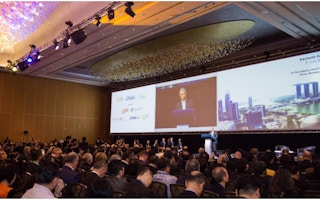Work together and the world has a better chance of solving its pressing water issues such as water shortages and floods. That was the key message at the Singapore International Water Week (SIWW) 2018, which also marked 10 years of excellence for the now-biennial conference.
More than 24,000 people from 110 countries and regions attended the event, which brings together high-level speakers from government, industry, academia and international organisations to discuss water challenges and solutions. This was about four times the number that participated in the inaugural edition in 2008.
“This year’s SIWW is the culmination of its efforts in the past decade to drive industry growth and help shape a much more sophisticated and forward-looking industry,” said SIWW managing director Bernard Tan.
He added: “The depth of the discussions, the landmark announcements that paved the way for industry acceleration, the number of water companies that have grown with our event and the continued pipeline of commercial deals all serve as a strong testament to the SIWW’s critical role as a key driver of the global water industry in the past decade.”
“
As Asia’s best example of a well-managed metropolitan environment, Singapore shows us a path to successfully build large yet liveable cities given this is a tangible challenge of our times.
Ranil Wickremesinghe, Prime Minister, Sri Lanka
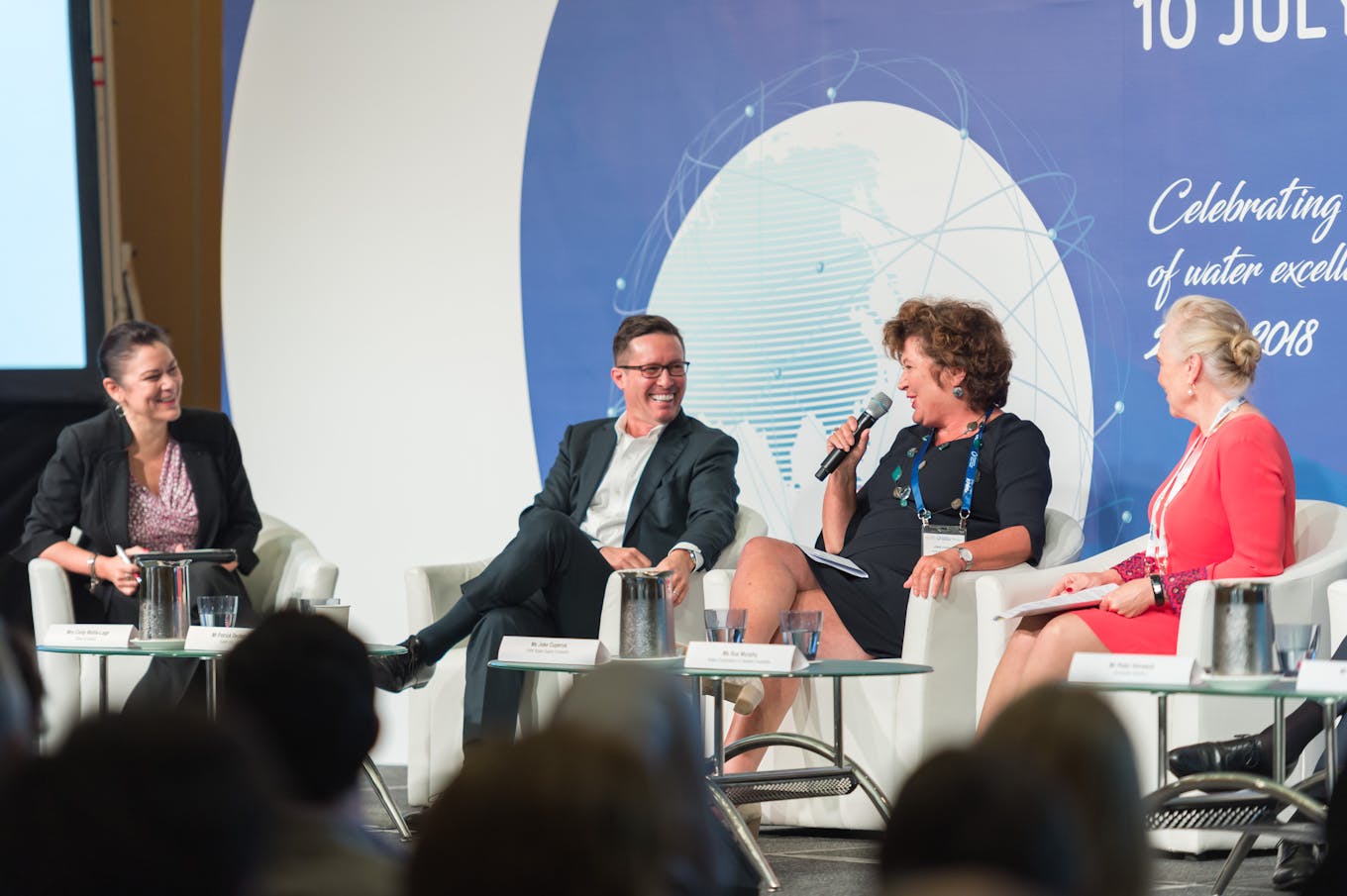
(Left to right) Cindy Wallis-Lage, president, Water Business Black & Veatch, Patrick Decker, president and chief executive officer, Xylem, Joke Cuperus, chief executive, PWNT, and Sue Murphy, chief executive officer, Water Corporation at Water Leaders Summit. Image: SIWW
Providing thought leadership in water
More than 500 water leaders from around the world attended the recent SIWW’s Water Leaders Summit and led insightful discussions on the state of the water sector. They included former United Nations secretary-general Ban Ki-moon, World Bank chief executive officer Kristalina Georgieva and Sri Lanka’s Prime Minister Ranil Wickremesinghe.
Ban said at the SIWW Water Dialogue, which was part of the summit, that the planet’s water supplies are under pronounced stress from accelerated climate change, unsustainable consumption patterns, poor management practices and other factors. He said: “We must do more to aid and support sustainable efforts by galvanising partnerships. It’s important to mitigate and adapt to this climate change phenomenon.”
“As Asia’s best example of a well-managed metropolitan environment, Singapore shows us a path to successfully build large yet liveable cities given this is a tangible challenge of our times. Providing leadership through this biennial conference is testimony to your [Singapore’s] achievements,” Wickremesinghe added during his keynote speech.
He noted: “Singapore has tried to maximise aquifer retention within its own territory from its first national development plan, but wisely also struck an agreement with neighbouring Johor state in southern Malaysia for water supply. Singapore is also a benchmark in desalination and potable quality recycling of wastewater… We can all learn a great deal from Singapore in their wise management of this critical input for liveability and development.”
The SIWW also paved the way to a better water future through its Young Water Leaders Summit, which connected 70 water professionals from more than 30 countries who are all in the early stages of their careers. They had networking sessions and discussions about various water issues with one another and with senior water experts.
Maryam Farhanah, a process engineer at Britain-headquartered engineering consultancy Mott McDonald, wrote about the summit: “The discussions really hit home about the growing inequalities between developing and developed nations, and how we need to rethink ways to address water and wastewater needs so that they are suitable for each local context.”
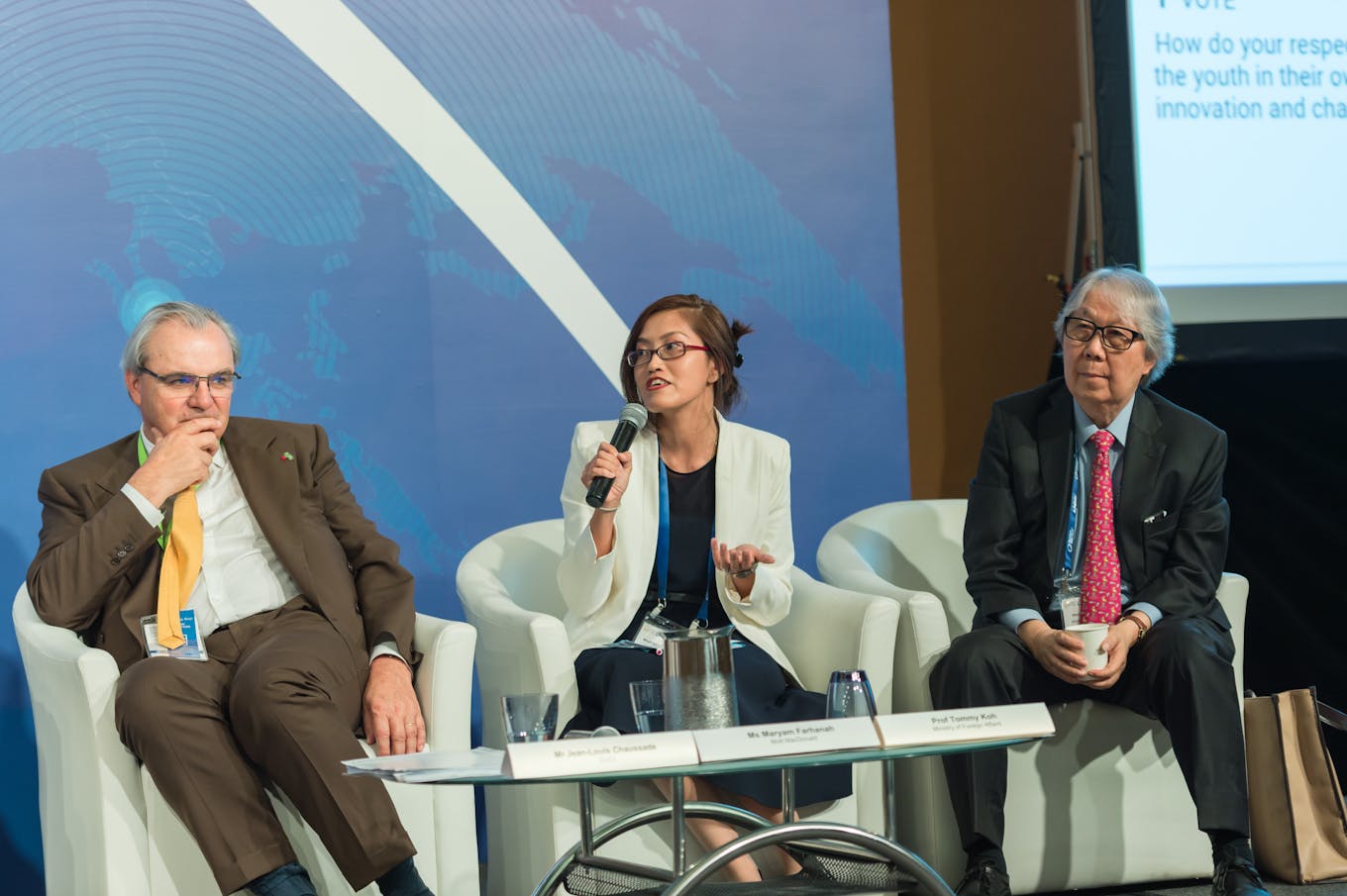
Maryam Farhanah (centre), a process engineer at Mott McDonald representing the youth voice at SIWW Water Leaders Summit Closing Session. Image: SIWW
Water research to help the world
The SIWW’s Lee Kuan Yew Water Prize Lecture and Water Convention also shone a spotlight on advances in water research that could help shape the world’s future. Professor Rita Colwell, an American microbiologist who won this year’s Lee Kuan Yew Water Prize for her work in fighting cholera and other waterborne diseases, delivered the lecture.
She noted that at least two billion people worldwide now use a drinking water source that is contaminated with pollutants, and contaminated water can carry as many as 25 to 30 infectious agents. “We are now launching what I think is the most exciting work of all. This is the ability to extract DNA directly from water samples… And this allows us then to be able to determine very quickly bacteria, viruses, parasites and fungi (in the samples) all at once and how they interact. This I think will be a major breakthrough for the water industry,” she said.
The Water Convention, for its part, featured nearly 350 presentations by researchers from around the world. These spanned a wide range of topics, including intelligent water networks, the provision of water and sanitation to urban informal settlements in the Asia Pacific, ways to prepare for extreme weather events and groundwater treatment.
Dr Kalanithy Vairavamoorthy, executive director of the International Water Association, said during the convention’s keynote plenary that effective inventions in wastewater treatment should be a priority. He added: “The last 50 years have been a pilot study on water management. Developing countries have the opportunity to leapfrog current water systems.”
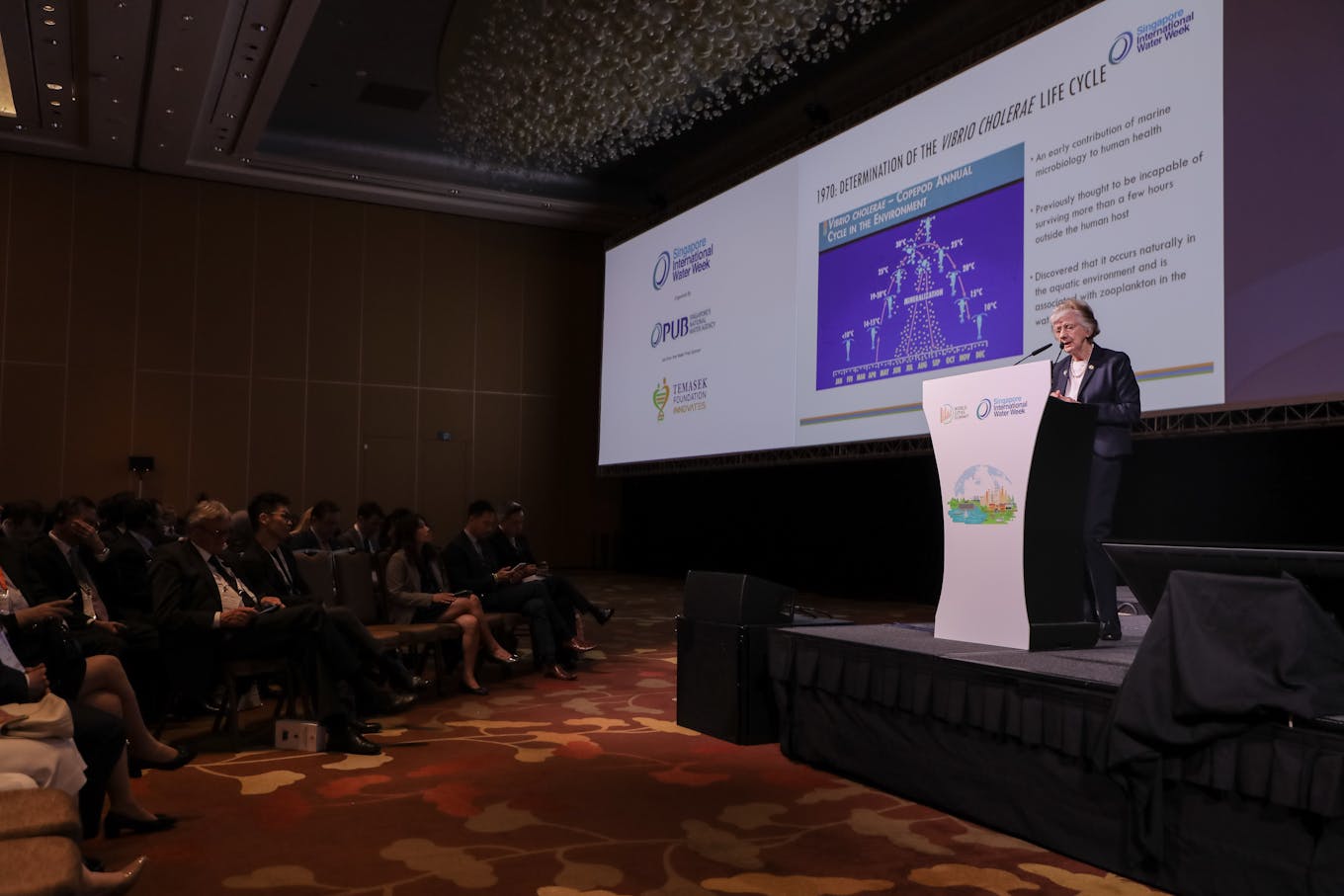
Professor Rita Colwell, Lee Kuan Yew Water Prize Laureate 2018 at the Water Prize Lecture. Image SIWW
A spotlight for water innovations
Many of the water industry’s latest innovations were on show at the SIWW’s TechXchange programme and Water Expo. The one-day TechXchange connected innovators to buyers, partners and investors to accelerate the commercialisation of new water technologies, including sensors to detect heavy metals in used water networks in real time.
Industry leaders also shared their tips and thoughts on the water sector during the programme. Sue Murphy, chief executive of western Australia’s Water Corporation, said: “There is an enormous amount of clever technology, but what we also need is clever implementation and integrated solutions.”
The Water Expo, held as part of the City Solutions Singapore exhibition, was another highlight of the SIWW. The exhibition had more than 1,100 firms occupying over 35,000 square metres, making it the largest one to date. The expo itself featured numerous pavilions, including 28 country and region-specific ones, that showcased cutting-edge water products and services.
Shekar Athreya, a process manager at United States-headquartered engineering consultancy Black & Veatch, noted at the event: “The SIWW has made its mark by having such an overwhelming overseas presence. You don’t have to fly around the world to meet important people; they come here to meet you instead.”
“
Australia is the driest continent in the world. Its population is growing strongly and 85 percent of it is living less than 50 kilometres from the coast. Where will the additional future water supply come from if not from the sea?
Roch Cheroux, chief executive officer, SA Water

The Smart Water Pavilion at Water Expo @ City Solutions Singapore. Image: SIWW
Making a mark in water business
The scale and variety of the business announcements at the SIWW also underscored its premier role in the global water industry. Nearly $23 billion worth of awarded projects, tenders, investments and memoranda of understanding were unveiled at the event, the highest in its 10-year history.
The World Bank committed to implementing 18 water projects worth $3.5 billion in east and south Asia and the Pacific during the 2019-2020 financial year, while Singapore’s national water agency PUB inked a three-year deal with Danish company Grundfos, the world’s largest pump manufacturer, to further digitalise the city-state’s water network for greater efficiency.
The SIWW Business Forums also highlighted opportunities for water firms. During the Desalination and Water Reuse Business Forum co-led by PUB and the International Desalination Association (IDA), Roch Cheroux, chief executive of the SA Water, emphasised his country’s need for better desalination technologies.
“Australia is the driest continent in the world. Its population is growing strongly and 85 percent of it is living less than 50 kilometres from the coast. Where will the additional future water supply come from if not from the sea?” he said.

The Desalination and Water Reuse Business Forum. Image: SIWW
Looking ahead to 2020
Delegates at the SIWW said that the event will continue to be an important nexus for water experts and professionals.
The IDA’s secretary-general Shannon McCarthy said: “The IDA looks forward to continuing its long history of collaboration with the PUB on the Singapore International Water Week, which dates back to the inauguration of what has become one of the world’s leading international water events.”
Among the SIWW’s other supporters was Joke Cuperus, chief executive officer of Dutch firm PWNT, which specialises in water treatment and has long sponsored the event. She wrote in a blog post shortly after the SIWW: “Looking back at the past few days, I can only conclude that the Singapore International Water Week was a very successful event.”
She summarised: “We once again had the opportunity to share innovative knowledge and experiences, new contacts for future cooperation and an update of the latest technologies. In two years’ time (at the next SIWW), we will definitely be contributing again to the opportunities to promote the water industry worldwide!”
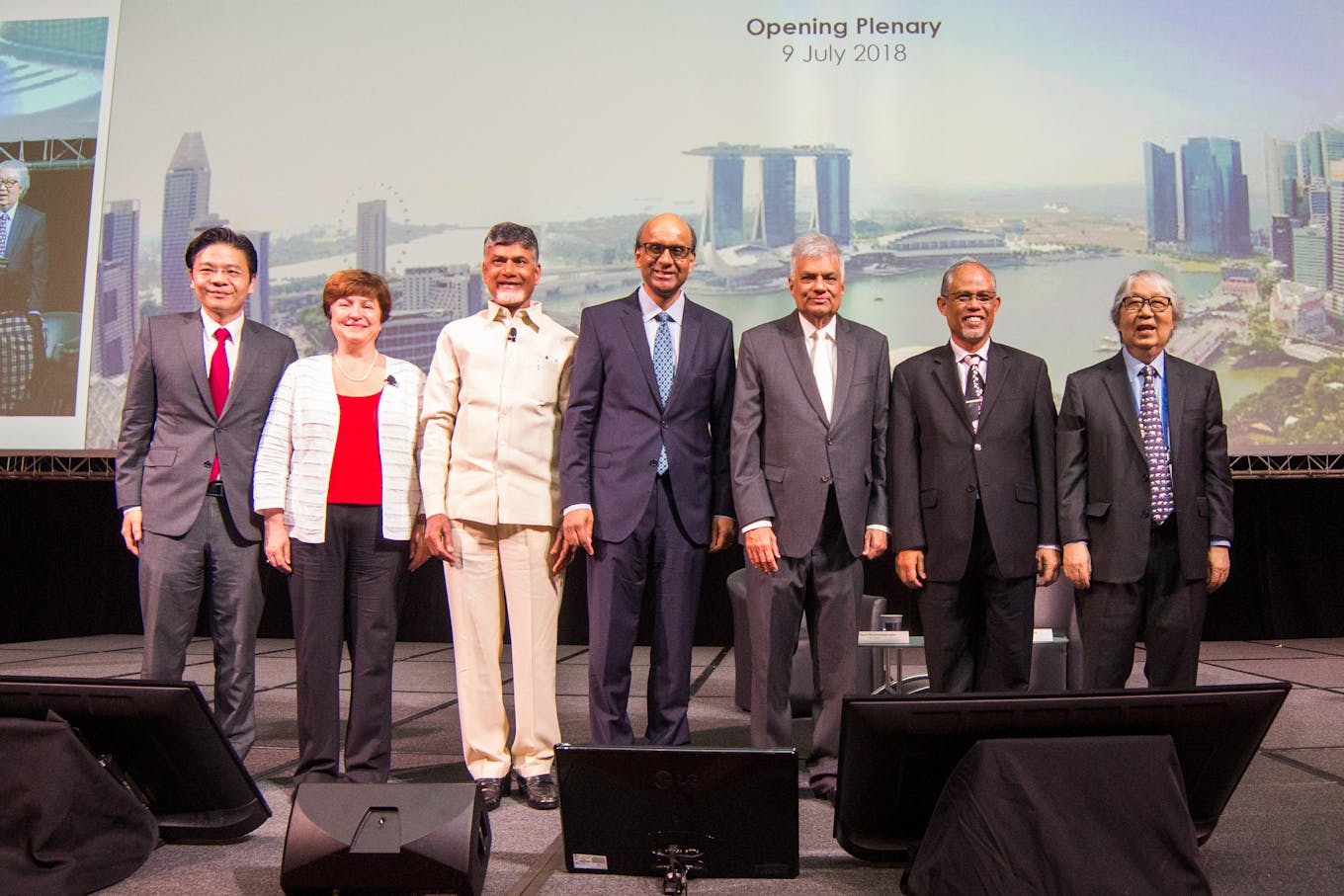
Government and water industry leaders at the Joint Programme Open Plenary session. Image: SIWW
The 8th Singapore International Water Week was held in conjunction with the 6th World Cities Summit and 4th CleanEnviro Summit Singapore from July 8 to 12 at the Marina Bay Sands Expo and Convention Centre. The next edition of the Singapore International Water Week will be held from July 5 to 9, 2020.

